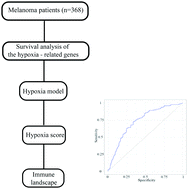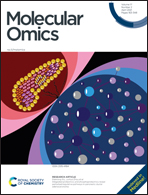Determination of hypoxia signature to predict prognosis and the tumor immune microenvironment in melanoma
Abstract
Melanoma is one of the highly malignant skin tumors, the incidence and death of which continue to increase. The hypoxic microenvironment drives tumor growth, progression, and heterogeneity; it also triggers a cascade of immunosuppressive responses and affects the levels of T cells, macrophages, and natural killer cells. Here, we aim to develop a hypoxia-based gene signature for prognosis evaluation and help evaluate the status of hypoxia and the immune microenvironment in melanoma. Based on the data from The Cancer Genome Atlas (TCGA) and Gene Expression Omnibus (GEO) database, we performed integrated bioinformatics to analyze the hypoxia-related genes. Using Lasso Cox regression, a hypoxia model was constructed. The receiver operating characteristic and the Kaplan–Meier curve were used to evaluate the predictive capacity of the model. With the CIBERSORT algorithm, the abundance of 22 immune cells in the melanoma microenvironment was analyzed. A total of 20 hypoxia-related genes were significantly related to prognosis in the log-rank test. Lasso regression showed that FBP1, SDC3, FOXO3, IGFBP1, S100A4, EGFR, ISG20, CP, PPARGC1A, KIF5A, and DPYSL4 displayed the best features. Based on these genes, a hypoxia model was established, and the area under the curve for the model was 0.734. Furthermore, the hypoxia score was identified as an independent prognostic factor. Besides, the hypoxia score could also predict the immune microenvironment in melanoma. Down-regulated activated CD4 memory T cells, CD8 T cells, and M1-like macrophages, and up-regulated Tregs were observed in patients with a high hypoxia score. The hypoxia-related genes were identified, and the hypoxia score was found to be a prognostic factor for overall survival and a predictor for the immune microenvironment. Our findings provide new ideas for evaluation and require further validation in clinical practice.



 Please wait while we load your content...
Please wait while we load your content...